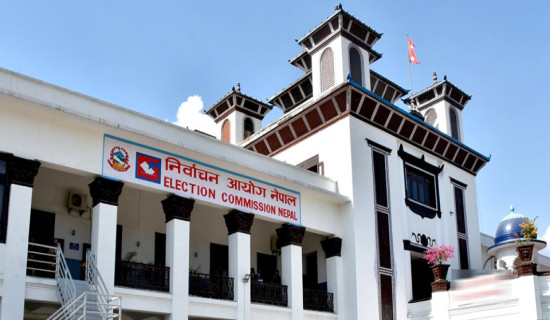- Monday, 19 January 2026
Doctor-Civilian Conflict On Rise
In recent years, Nepal has seen a disturbing rise in conflicts and tensions within the healthcare sector, notably between physicians and patients. This alarming trend reached a tipping point last week when it disrupted healthcare services across the country, causing thousands of patients to suffer. The trouble in the health sector unfolded after resident physicians throughout the country went on strike protesting attacks on doctors at Manipal Teaching Hospital in Pokhara, where a police officer was accused of assaulting a doctor. Over the last four months, there have been at least seven incidences of misbehaviour against and physical assaults on medical professionals, forcing doctors across the country to cease health services for a few days.
The striking doctors demanded protection and punishment against the perpetrators. They only returned to work after compelling the government to ink an agreement with them in which the government agreed to include a provision in the law to sentence any assaulters to three years in jail for attacking a doctor. Some have requested that probe panels be formed to investigate any allegations of doctor’s malpractice. Unfortunately, on the day doctors returned to their work following the aforementioned agreement, a doctor working at Kathmandu Medical College was attacked by a patient's relatives, who accused him of being negligent to their patient. This incident indicates that frustrated relatives can resort to violence without giving any attention to laws.
Malpractice
The rising number of attacks on physicians has increased security concern among the country's healthcare workers such as doctors and nurses. When patients or their families suspect medical malpractice, negligence or substandard care, often leading to deaths of patients, they frequently resort to violence against the doctors and nurses. In several cases, patients with minor ailments have died ‘owing to wrong treatment on the part of doctors and health institutions’. We have plenty of cases where hospitals have agreed to pay compensation to families of deceased patients to settle disputes caused by a perceived negligence.
One major issue is the idea that the country's judicial system fails to deliver proper penalties for violent offenders, adding to the fear of health professionals. Recent assaults on physicians in both public and private institutions are glaring instances of this problem. In other cases, groups and health sector middlemen who make monetary and other gains from these disputes have given rise of such incidents, eroding confidence and cooperation between physicians and patients.
Because of its humanitarian value, the healthcare industry, and particularly the medical profession, is revered across the world. However, a strong doctor-patient relationship has yet to emerge in Nepal, where accessible and affordable quality health care is still a pipe dream for a major portion of the population. Another factor that requires attention when it comes to reducing attacks is the problem of good communication between doctors and patients, as well as with patients' relatives. Patients and their families should be well-informed on their diseases and treatment plans, which is frequently not done. Doctors and aides must be well-versed in explaining medical issues to patients and their families in a straightforward and sympathetic manner.
Another issue in health-care facilities has persisted for long in our country. Many people regard physicians and health facilities, particularly private ones, as money-sucking entities. Doctors are frequently accused of pressuring patients to see them and their health facilities under various pretexts, or of compelling patients to stay in hospital for extended periods in exchange for greater hospital and medical expenses. They are also accused of prescribing medications or obtaining services from particular organisations in order to receive commissions. Patients and families from the lower and middle classes are less likely to visit such physicians and private health facilities, preferring to go to government hospitals where services are somewhat affordable.
However, health employees at many government-run hospitals are accused of being inattentive in their duties, which irritates patients and families alike. Many say the cases of tensions between doctors and patients started taking place after the 2000s, when the country saw a substantial surge in the number of private hospitals, nursing homes, and other healthcare facilities. Prior to it, assaults against physicians and hospitals were nearly unheard of.
Meanwhile, many government-run hospitals do not have a sufficient number of physicians, forcing them to labour with heavy workloads that force them to be inattentive to patients on a frequent basis. This problem has arisen in the country since many physicians do not want to be stationed at district and mofussil hospitals. They wish to be stationed in the capital. Recently, the Health Minister alleged that over 800 physicians had failed to report to their work stations located outside the capital and were staying in Kathmandu on various pretexts.
Stringent laws
As the doctor-patient confrontations continue to rise, it is imperative for the government to take adequate and prompt measures to address these concerns and safeguard the safety of healthcare personnel. Stringent laws, as updated in the Security of Health Workers and Health Organisations Act, are required. Both enforcement of law and awareness initiatives are essential. Furthermore, it is critical to replace vacant healthcare posts, reduce doctor workloads, and fully equip healthcare facilities in order to minimise disputes.
It is high time for the government, medical groups, and society at large came together and addressed the underlying causes of these confrontations. It is equally important the erring health professionals must also come clean, since many of them are justifiably criticised for being careless to the suffering of patients. Tougher rules, efficient and effective communication, and a dedication to the well-being of healthcare providers are necessary to protect the sanctity of healthcare and guarantee that patients receive the treatment they deserve. Safeguarding both healthcare providers and patients is crucial for a thriving healthcare system.
(Upadhyay is former managing editor of this daily.)












-original-thumb.jpg)




